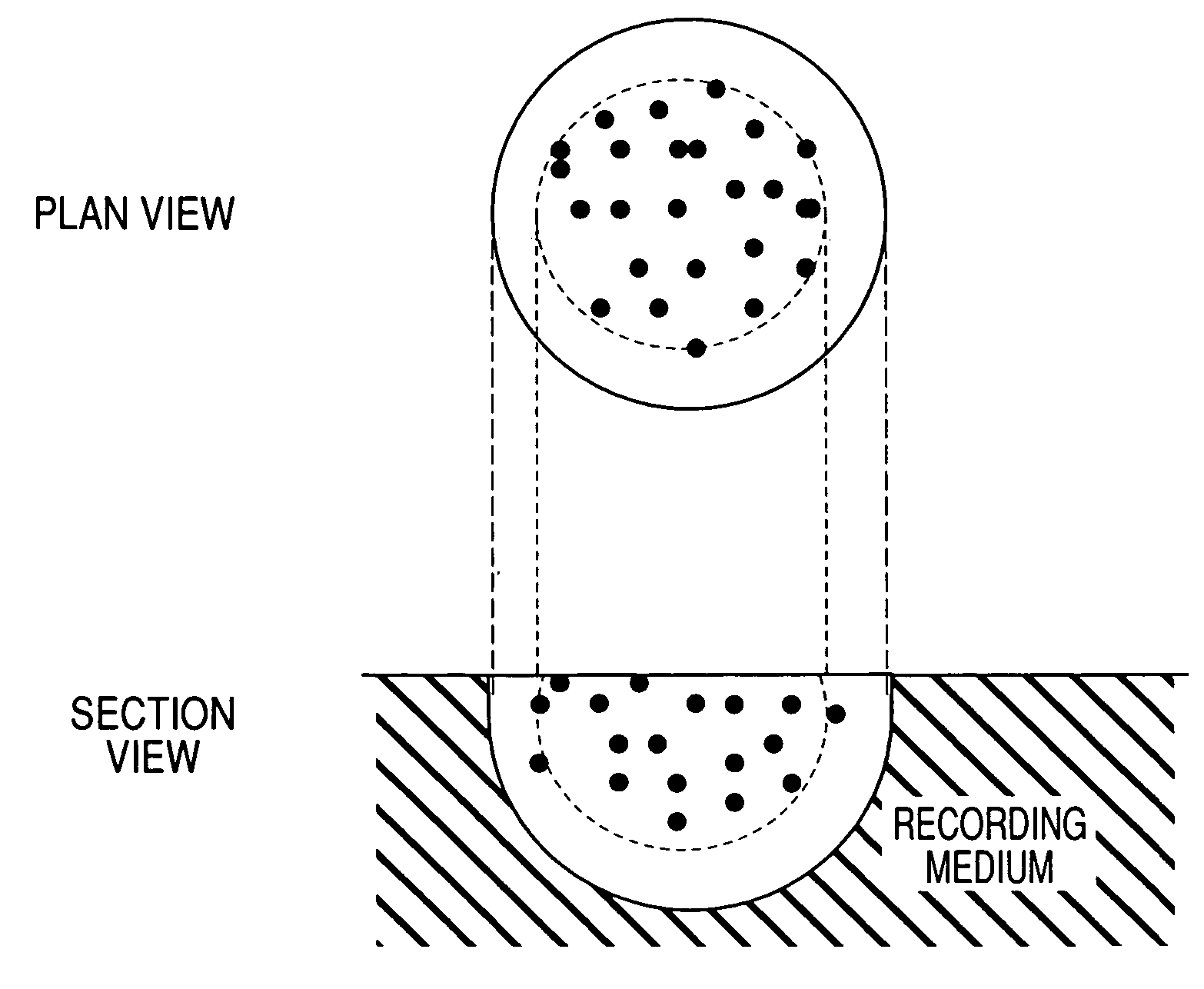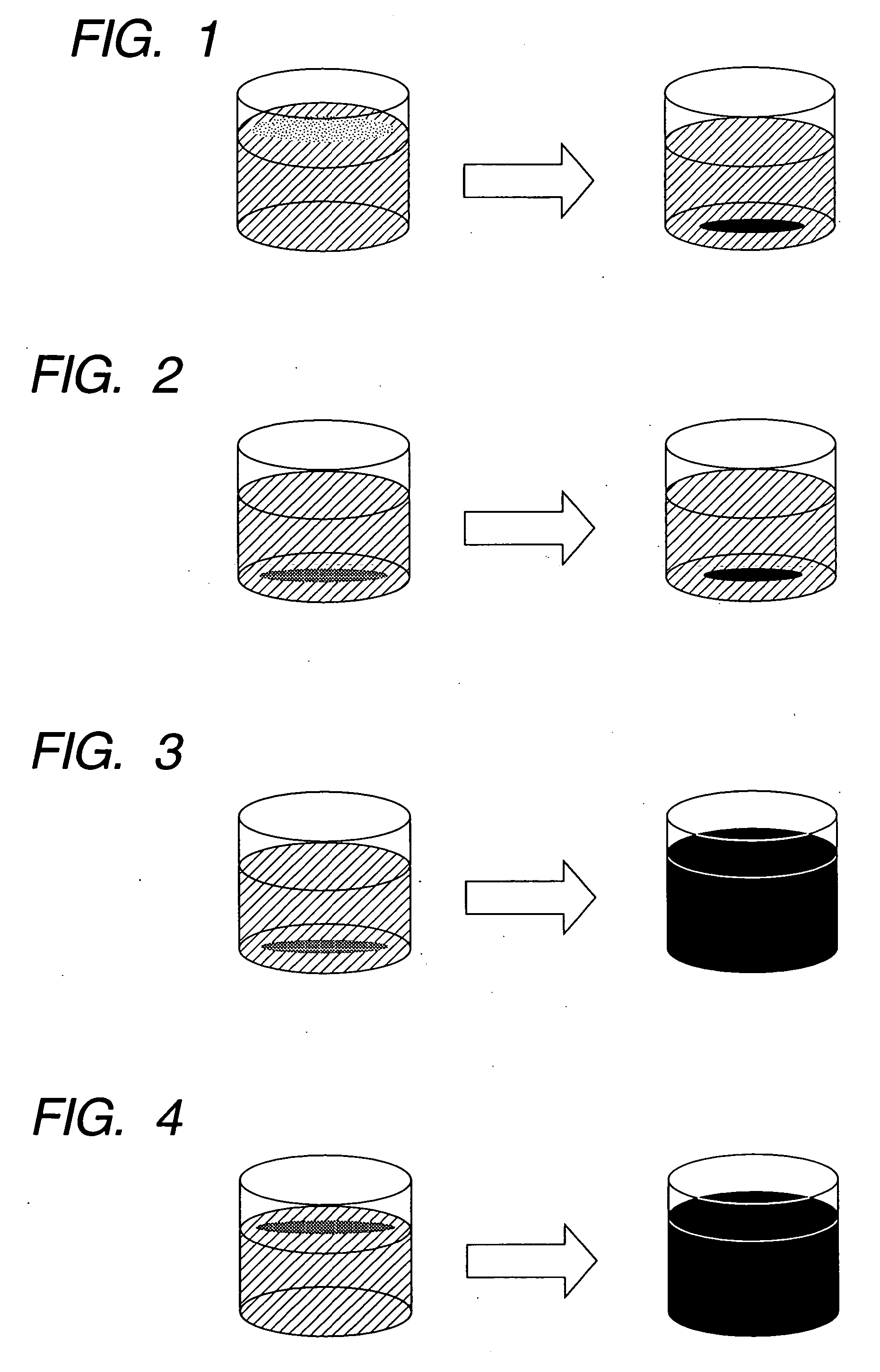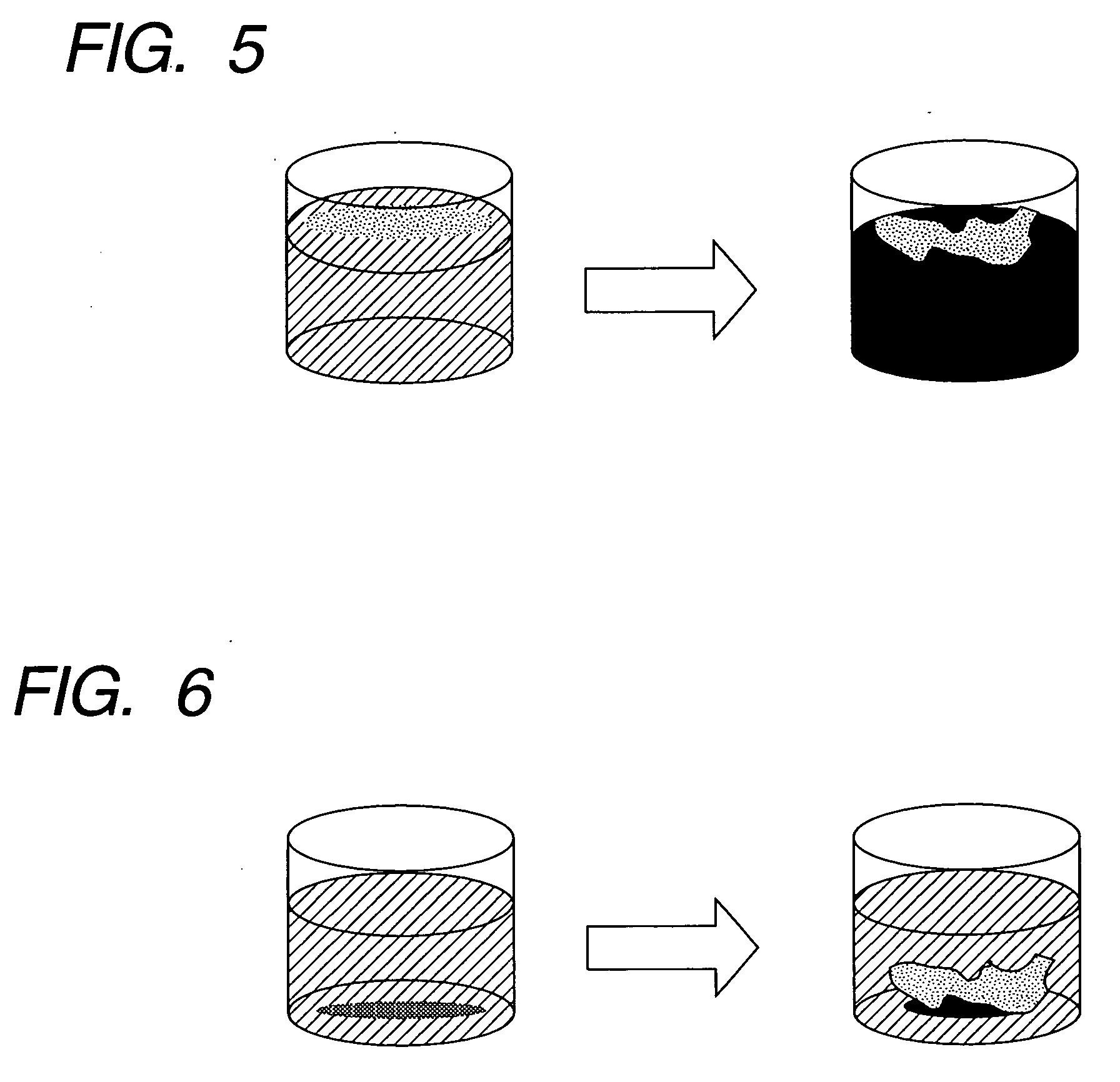Water-based ink, and image formation method and recorded image using the ink
- Summary
- Abstract
- Description
- Claims
- Application Information
AI Technical Summary
Benefits of technology
Problems solved by technology
Method used
Image
Examples
examples
[0125] The present invention will be specifically described below using Examples, but they are not intended to limit the scope of the present invention. Furthermore, % described herein is % by mass unless otherwise specified.
[0126] Components shown below were mixed, sufficiently stirred and dissolved and / or dispersed, and then filtered under pressure by Fluoropore Filter having a pore size of 0.1 μm (trade name: manufactured by Sumitomo Electric Industries, Ltd.) to prepare inks of Examples and Comparative Examples, respectively.
Ink Composition of Example 1
[0127]
Cabojet 300 (water-dispersible coloring2%material, water-soluble group: carboxylic group)Glycerin10% Ethylene glycol5%Surfactant of general formula (VIII) (ethylene2%oxide 10 mol adduct)Pure waterthe rest
Ink Composition of Example 2
[0128]
Cabojet 300 (water-dispersible coloring2%material, water-soluble group: carboxylic group)Glycerin7%Ethylene urea10% Surfactant of general formula (VIII) (ethylene1%oxide 10 mol adduct)Pure...
example 4
Production of Dispersion Solution
[0131] Using benzyl methacrylate, methacrylic acid and ethoxy ethylene glycol methacrylate as raw materials, an ABC type block polymer having an acid value of 350 and a number average molecular weight of 5000 was made according to a conventional method, and the block polymer was neutralized with an aqueous potassium hydroxide solution, and diluted with ion-exchange water to prepare a homogenous 50% aqueous polymer solution. 60 g of the 50% aqueous polymer solution, 100 g of carbon black and 340 g of ion-exchange water were mixed together, and the resultant mixture was mechanically stirred for 0.5 hours. Then, using a micro-fluidizer, the mixture was treated by passing the mixture through an interacting chamber five times under a liquid pressure of about 10,000 psi (about 70 Mpa) to obtain dispersions. The dispersions were subjected to centrifugal separation processing (12,000 rpm, 20 minutes), whereby coarse particles were removed to obtain a dispe...
example 7
Production of Dispersion of Coloring Material
[0135] Using benzyl methacrylate and methacrylic acid as raw materials, an AB type block polymer having an acid value of 250 and a number average molecular weight of 3000 was made according to a conventional method, and the block polymer was neutralized with an aqueous potassium hydroxide solution, and diluted with ion-exchange water to prepare a homogenous 50% aqueous polymer solution. 100 g of the polymer solution, 100 g of C.I. Pigment Red 122 and 300 g of ion-exchange water were mixed together, and the resultant mixture was mechanically stirred for 0.5 hours. Then, using a micro-fluidizer, the mixture was treated by passing the mixture through an interacting chamber five times under a liquid pressure of about 10,000 psi (about 70 Mpa) to obtain dispersions. The dispersions were subjected to centrifugal separation processing (12,000 rpm, 20 minutes), whereby undispersed matters including coarse particles were removed to obtain a disp...
PUM
| Property | Measurement | Unit |
|---|---|---|
| Percent by mass | aaaaa | aaaaa |
| Energy | aaaaa | aaaaa |
| Fluorescence | aaaaa | aaaaa |
Abstract
Description
Claims
Application Information
 Login to View More
Login to View More - R&D
- Intellectual Property
- Life Sciences
- Materials
- Tech Scout
- Unparalleled Data Quality
- Higher Quality Content
- 60% Fewer Hallucinations
Browse by: Latest US Patents, China's latest patents, Technical Efficacy Thesaurus, Application Domain, Technology Topic, Popular Technical Reports.
© 2025 PatSnap. All rights reserved.Legal|Privacy policy|Modern Slavery Act Transparency Statement|Sitemap|About US| Contact US: help@patsnap.com



